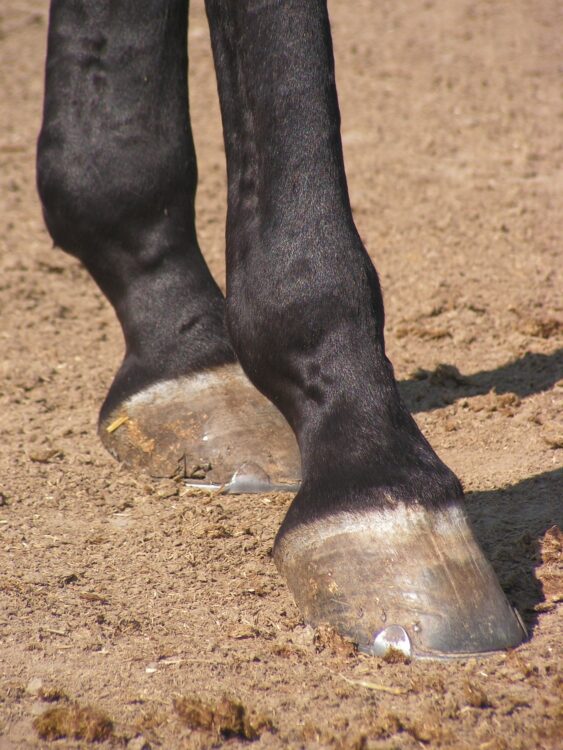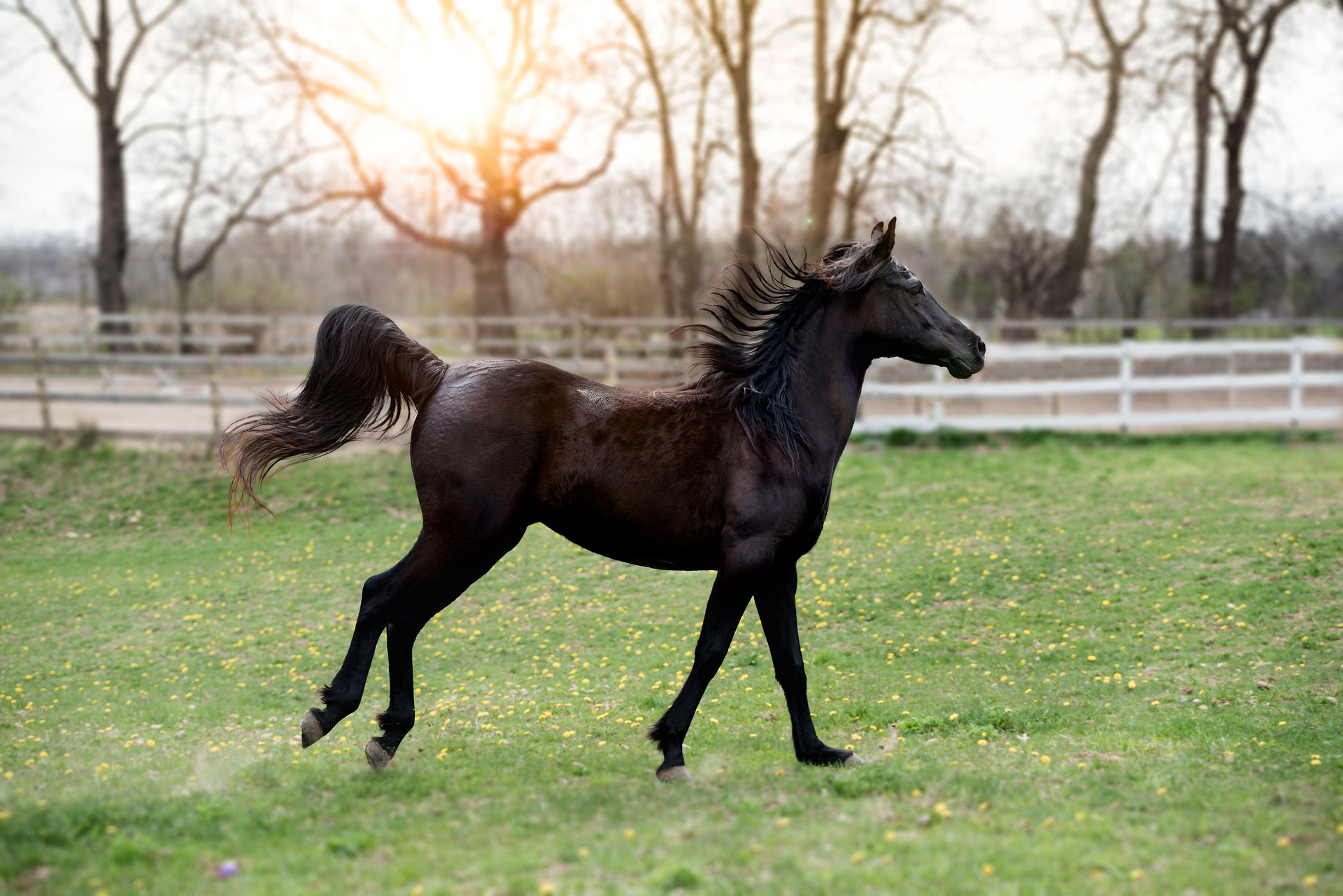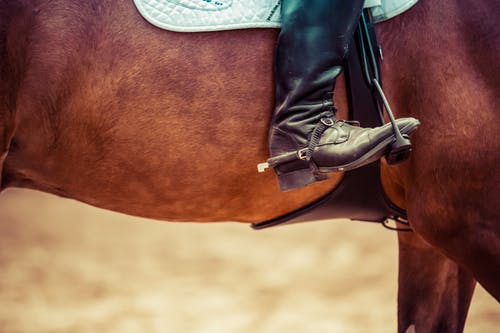This article was previously published January 17, 2014, and was updated on July 28, 2022
First Aid for Laminitis in Horses
If you suspect that laminitis (or founder, as it is known in layman’s terms) is to blame for your horse’s sudden lameness, call your veterinarian immediately. Then, follow this first-aid protocol while waiting for the vet’s arrival. As you administer the first aid, note your findings so you can report them to your vet:
- Think back on your horse’s recent health history. Has he been suffering from any illness, including fever, colic, disease or injury? These factors can predispose a horse to laminitis. If your horse has a history of laminitis, then you already know he’s a high-risk candidate for the disease.
- Has your horse had a recent diet change, or has he indulged in something that’s normally off-limits or carefully rationed, such as grain or other sweet feed? Too many carbohydrates (sugars) at one sitting are a trigger factor in some laminitis cases. Another factor: pasture grass. Spring and fall pastures contain higher levels of fructans (sugars), and are the culprits in many laminitis cases.
- Pay attention to your horse’s demeanor. Does he seem worried? Look at his stance. Is he trying to shift weight off of both front feet, or maybe a particular limb? If so, he’s in pain.
- Look at your horse’s hooves. Are there any defects—any wounds or draining tracts around the heels or coronary bands? Draining tracts can indicate an abscess, and an abscess often goes hand-in-hand with laminitis. Are his hooves worn down extensively? A barefoot horse worked on hard surfaces over a long period of time can suffer dangerous wear and tear that predisposes him to “road founder” (another layman’s term).
- Check for heat and increased digital pulse along all four hooves. To check for heat, palpate each hoof. Does one seem warmer to the touch than the others? To check for an increased digital pulse, feel behind each fetlock. A bounding digital pulse can indicate inflammation and pain associated with laminitis. Keep in mind that laminitis can strike one hoof, or more! Most often, laminitis affects the front feet.

- Trotting a horse out is a way to evaluate soundness, but if you suspect laminitis wait for your veterinarian to arrive first. Trotting a lame horse—particularly one suffering laminitis–for an extended period can cause further damage. If your horse is suffering a bout of laminitis, he will probably be reluctant to move, but just in case, keep him in a stall or small paddock while waiting for the vet’s arrival.
- Immerse the affected hoof or lower limb in a tub of ice and water (from just below the knee and down) until your vet arrives. This step in the laminitis first-aid protocol is critical: The cold therapy brings down inflammation inside the hoof and helps slow further damage. For many horses, this step can make the difference in recovery.
- Don’t medicate your horse unless your vet advises. If your vet is expected to arrive soon, withhold all feed, particularly feed high in sugar (sweet feed, spring or fall pasture grass, et cetera).
Laminitis is a life-threatening disease, and sometimes even the best care doesn’t change an unfortunate outcome. However, with prompt veterinary attention and proper first aid, your horse’s chances at a successful recovery increase immensely.
This article courtesy of HorseIllustrated.com
Bio
Val Heart – Expert animal communicator, speaker, bestselling author & master healer, Val is often called The Real Dr Doolittle™ and Animal Communicator to the Stars. Founder of The HEART System™ for solving problems with pets. Get your Free QuickStart to AnimalTalk Course at http://www.animaltalkcoachingclub.com
© Copyright, Val Heart & Friends LLC. All Rights Reserved.
Enjoyed this article? Here are three more to help you:
Whole Horsemanship with Penny Stone on the Real Dr Doolittle Show™
Socialization with Horses, Dogs, Cats With Dr Sid Gustafson on the Real Dr Doolittle Show
Animal Reincarnation and Souls with Jenny Smedley on The Real Dr. Doolittle Show™






Leave a Reply